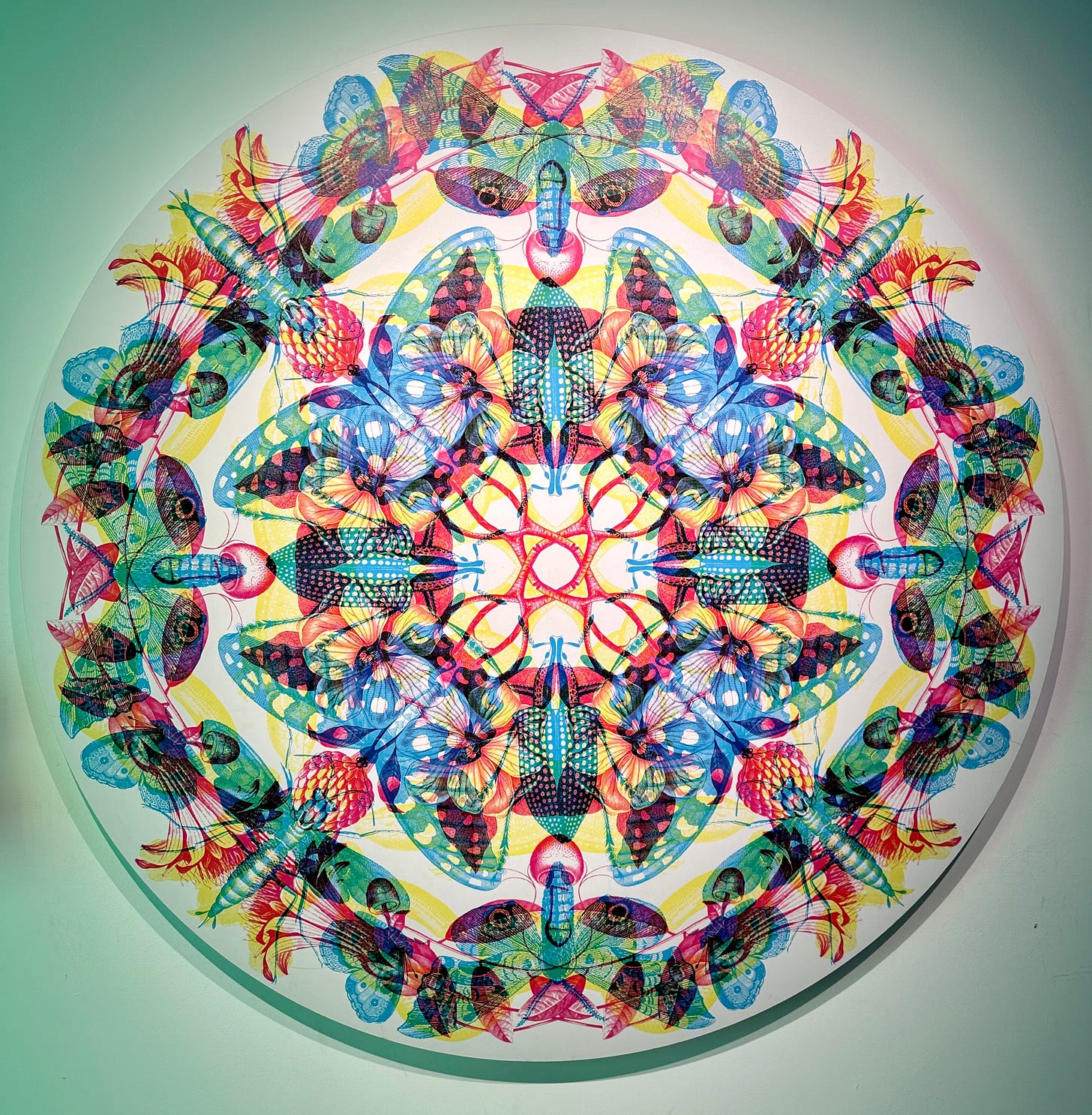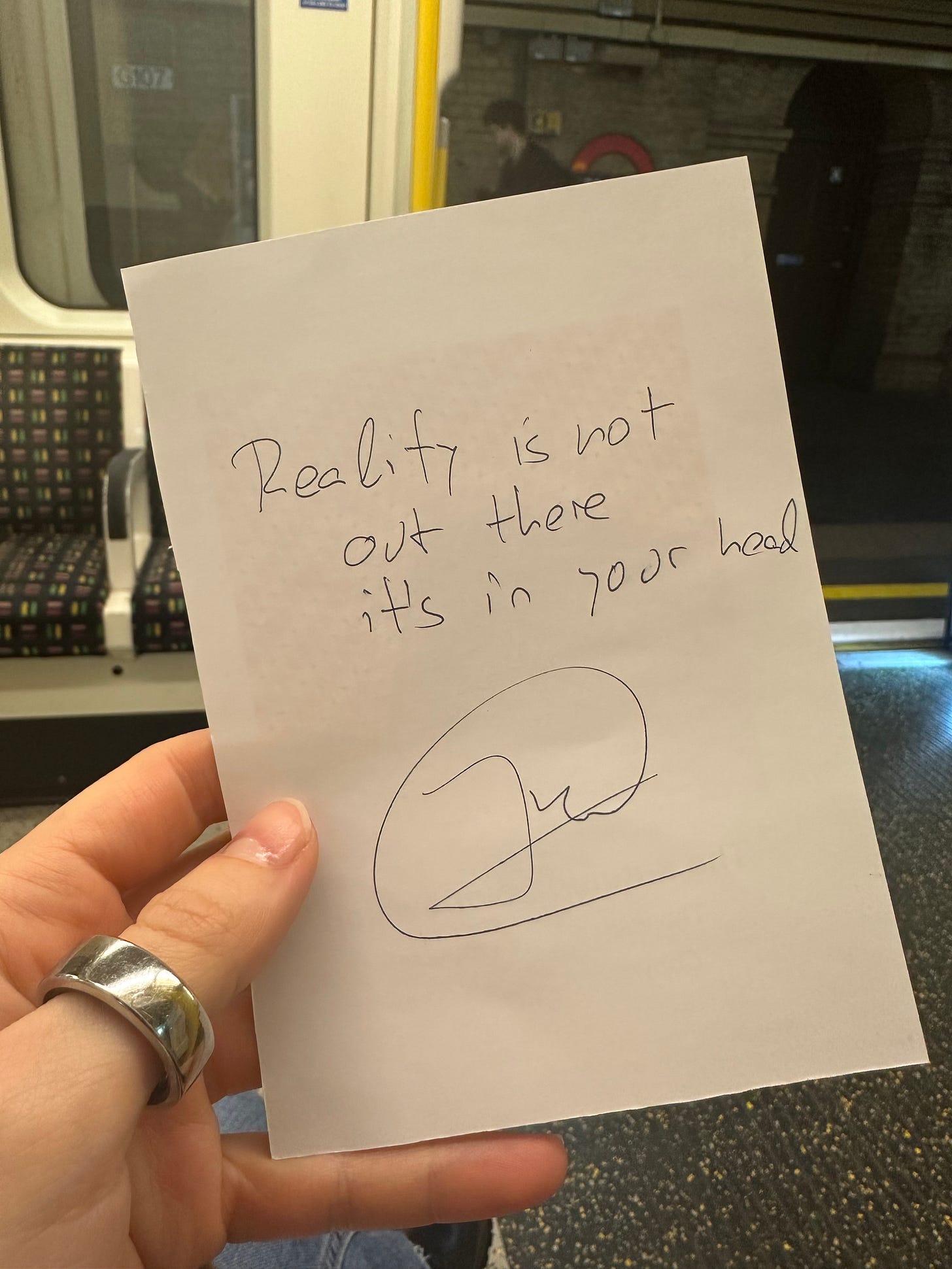A portrait of insanity
The difference between genius and mental illness. When does sanity shift to insanity?
“Alright, everyone,” I announced. It was time to start group therapy for the residents of a psychiatric house. Terrified and barely twenty-two, I glanced at my supervisor who was already busy with note-taking.
The residents of this house were calmer than I expected. Psychiatric patients always looked unpredictable, chaotic or completely spaced out in the movies. Though a couple of the residents had physical twitches and vacant stares, most of them were people I’d expect to see having lunch at a coffee shop, working in an office, or giving in to temptation and ordering pizza on a Friday night in front of their favourite series.
I prepared a topic to discuss for today’s group session, based on the recommendations of my supervisor. After introductions and some housekeeping, I asked the group, “How do you cope with sadness?”
A few answers trickled in: sleep, walking outside, painting, one resident bellowed at the top of their voice: “SEX!”. Laughter ensued and subsided. A hand went up. “Yes?” I encouraged the man to speak.
He stared at me intently and said, “You can’t be happy without the contrast of being sad.”
A silence fell over the group. He continued, “Contrast is what makes our world what it is, otherwise it’d all be monochromatic.”
I suspected this comment was the tip of an incredibly fascinating iceberg.
Simon was extremely tall and filled out for a middle-aged man, sitting casually on the outskirts of the group with a gentle yet confident demeanour. He wore a beige T-shirt, pale blue denim jeans, and worn-out walking boots. He had a small dog-eared notebook resting on his leg, one crossed over the other. His eyes were calm, yet intense. I couldn’t place why he was sitting here, he didn’t seem to have any psychiatric issues at all.
After the group session, I asked my supervisor about him. “Ah, you mean what’s wrong with him?” My supervisor chuckled, and I blushed, embarrassed to have asked. “Simon’s stable at the moment, but he’s been known to get quite violent during his episodes, so just be wary and let our staff know if anything seems off. His main diagnoses are paranoid schizophrenic and severely bipolar, but he’s calmed down enough to live here with others and not in the hospital.”
I was heading for the door when an art piece on the dining room table caught my eye. It was the busiest, most hypnotic drawing I’d ever seen. In it was a street of shops, buses and signs made entirely of geometric shapes and oddly massive words scattered across the scene:
ECSTASY DESPAIR OUTSIDE INSIDE GEOMETRY ART REALITY
The colours were pencil pastel pinks, blues and greens, and every slither of whitespace was accounted for with careful attention. The more I looked at it, the more intricacies I saw.
“I see you’ve found my latest drawing.” I jumped. I hadn’t noticed Simon standing behind me, how long had he been there?
“I’m better at drawing but my passion is poetry and philosophy.” He said.
“This piece is beautiful, nothing like I’ve seen before,” I commented. He stayed quiet. “So,” I broke the silence, “who’s your favourite poet?”
We spoke for almost an hour about poetry, geometry, and his PhD in quantum physics. He explored concepts I would never have thought of or found on my own. His mind was unique and extremely attuned to paradoxes, capable of consolidating the seemingly unrelated artefacts of the world.
Soon, after every group session, Simon would approach me to speak about everything ranging from the origins of the Universe to what kind of mugs are best to keep coffee warm. I never grew bored of his perspectives, and his thoughts were fodder for great ideas in science and philosophy.
One week, Simon didn’t attend my group session. It wasn’t like Simon to forget. When I asked the staff where he was, they grimaced and told me to speak to my supervisor.
So, I waited in the passage outside the therapy room until my supervisor finished his counselling appointment with one of the other residents.
Finally, my supervisor opened the door. I greeted him and the other resident and ushered myself into the counselling room. My supervisor closed the door behind me, and sat in his armchair, relaxing into it, becoming one with it, as it moulded around his usual psychologist’s pose. My chair tried to pull me into it too, but my mind and body were restless.
“It seems you and Simon share common interests,” my supervisor started, “he’s an interesting guy, isn’t he? Very smart.” I nodded. He continued, “I thought you should know… He won’t be coming to sessions for a while.” He looked up at me and folded his hands on his lap, watching my reaction.
“Ah, ok. Thanks for letting me know.” My response sat in the room, stagnating into a thick awkwardness. “May I ask why?” I finally asked.
“Did you see Simon’s artwork a few weeks back? The ones with the signs, houses and grotesque, huge words?” He didn’t wait for my response, “we suspected that they were a sign that he was reaching the peak of his manic high mood swing. The crash after one of those can be debilitating and severe, but he normally recovers pretty well.” My supervisor paused again. “This time, though, we didn’t have the resources to manage his depressive state, so he’s gone back to the hospital for a while until he’s better adjusted. Less aggressive, as well.”
A lump formed in my throat, and before I knew it, tears welled in my eyes. I sat up straight, retaining whatever professionalism I could muster.
“A word of advice if you want to pursue a career in clinical psychology.” My supervisor read me like a book. “You must not, under any circumstance, get too invested in patients. No matter how ‘normal’ you think they’re behaving, they could deteriorate at any time. Additionally, whatever they say may or may not be genuine information.”
I stared at the floor.
He sighed, “You see, 99% of the psychiatric residents here will never return to the society that you and I occupy. You’re their group therapist, not their friend.”
But he misunderstood the source of my emotional turmoil. Yes, I was upset that Simon had been hospitalised. But I truly mourned the dismissal of the genius mind Simon knew he had.
Some of the most prolific and influential artists and mathematicians have suffered from mental illness. Van Gogh, Frida Kahlo, the list is long enough to account for an essay in its own right.
I struggled to pull apart what ‘insanity’ is and isn’t. Some days, the outside world was crazier than the psychiatric house. On other days, I didn’t recognise some residents and the realities they’d created. Our realities were mostly incongruent in those moments, but what affected me was that our realities also overlapped, as they would with most human beings. My sense of reality was becoming more fluid than my emotional state could handle at such a young age.
That day, I sent in my resignation as a group therapist. I left with one major lesson.
The difference between insane and sane is how functional we are in society. Our mental state is mostly dictated by how others perceive our behaviour and whether it’s threatening. Once a label of ‘mentally unwell’ is applied to us, our version of reality would likely be discredited, no matter how beautiful our minds might be.
My message today is this: support and empathy go a long way, especially to people who go unseen and unheard. Sometimes, the most powerful way to support each other is to listen. After all, we all have our versions of insanity, with varying degrees of severity.
Thanks for reading Mindfork! Share with your friends if you fancy. See you soon xx
Note: The names and personal details of the people in this essay have been changed to protect their identities.
If you enjoyed this essay, you might like:





